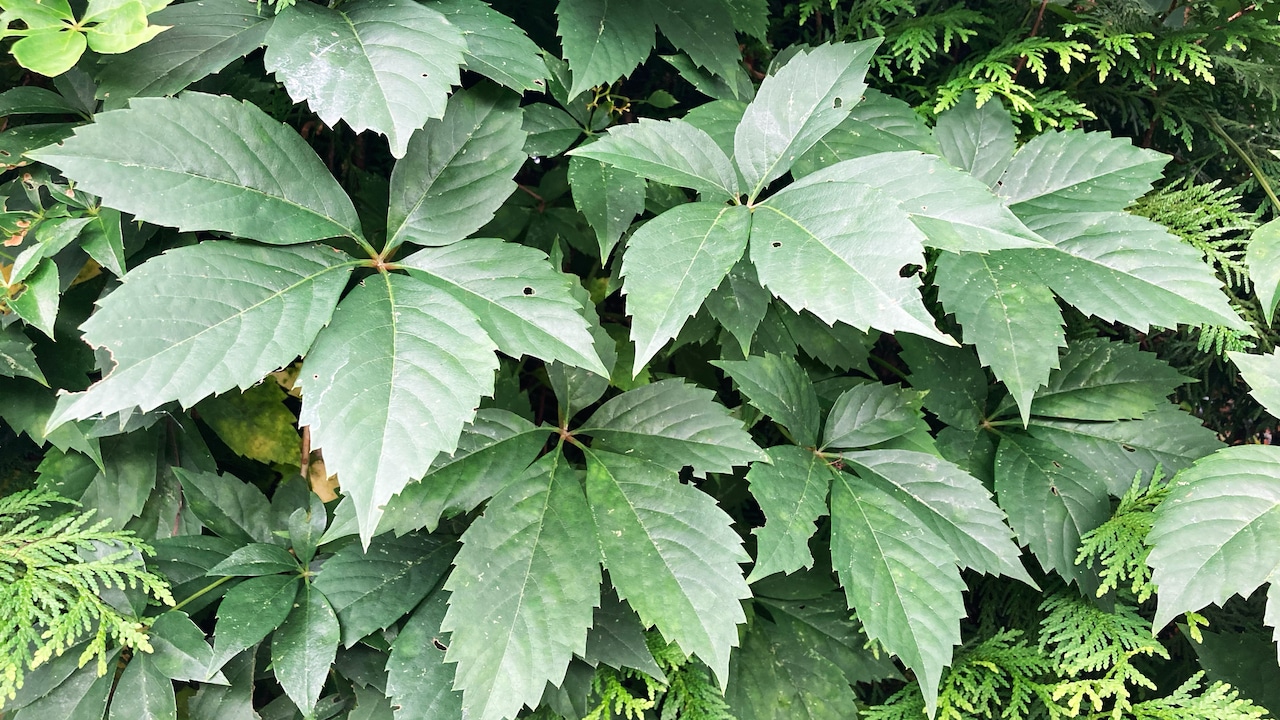Although it doesn’t seem possible, we are already nearing the end of July. past half of the year is already past, and if you look closely, you can see a few minor indications of how nature is changing.
Occasionally, when there is a strong wind, walnut trees’ yellow leaves fall off. This briefly reminds you of the approaching season, but it doesn’t necessarily guarantee that fall will arrive sooner than expected.
Over the past month, I’ve devoted a lot of time to removing Virginia creepervines from areas I don’t want them. The eastern region of the nation is where this flowering vine is indigenous. Eventually, it produces berries that are poisonous to humans but are consumed by birds and other creatures. According to what I’ve read, consuming them has killed some people.
This grapevine, also called woodbine, can be a nuisance. As it develops, it uses tendrils with tiny adhesive pads at the tips to climb anything it can find. It has five leaflets that frequently cover dead trees, fences, and telephone poles completely. The leaves, some of which I have already recently seen, turn a vivid red in the fall.
Smile-a-minute vine is the other bothersome vine that I’ve been battling all the time. Due to its ability to grow almost anyplace, this unintentionally imported Asiatic vine is on everyone’s list of invasive plants.
It is also known as tearthumb because of its triangular leaflets and barbed stems, which make it easy to identify. If you wish to remove plants from your skin, wear gloves because these barbs will swiftly pierce your flesh without them. If you allow it to spread, it will cover everything that is growing close by.
Rose-of-Sharon is likely to be blossoming in many yards as you drive through suburban communities these days. It is a Chinese and Asian hibiscus that was popular and planted many years ago.
This plant is currently listed as an invasive species even though its blossoms draw a lot of pollinators. It yields a large number of seeds that sprout readily wherever they land. Many people who have never planted rose-of-sharon shrubs discover them sprouting in their yards. Additionally, Japanese beetles are drawn to it.
In fields and waste areas, another invasive plant is currently producing yellow flowers. Bird s-foot trefoil, a pea-family plant native to Europe, is aesthetically pleasing but can grow into huge plant mats that impede native growth.
In terms of birds, hummingbirds should be visiting your yard right now if you have sugar/water feeders or nectar-rich blooms. By the end of July, both adult and juvenile birds are traveling around a lot in this area of the country. Although it might be challenging to distinguish youngsters from adult females, juveniles frequently have a beige tint to their heads.
Hummingbirds will start to migrate south in August, and by early September, the majority of the mature males will have left. However, until the end of September or the beginning of October, females and their young will still move through our region.
Additionally, some early hawk count locations will begin to be staffed in August.
What goes around comes around, as usual.
more lehigh valley outdoors news
-
Pennsylvania Game Commission proposes 10 additional Sunday hunting dates for 2025
-
Bethlehem now has the money and a timeline for closing one of Pa. s top 10 trail gaps
-
Ragweed, not goldenrod, causes most hay fever symptoms in summer | Lehigh Valley Nature Watch
-
Pa. cities crack down on illegal swimming amid broader safety, quality of life concerns
-
Sunday hunting and more: These Pennsylvania outdoors laws were signed this summer
Your support is essential to our journalism. Please sign up for a subscription to lehighvalleylive.com now.






